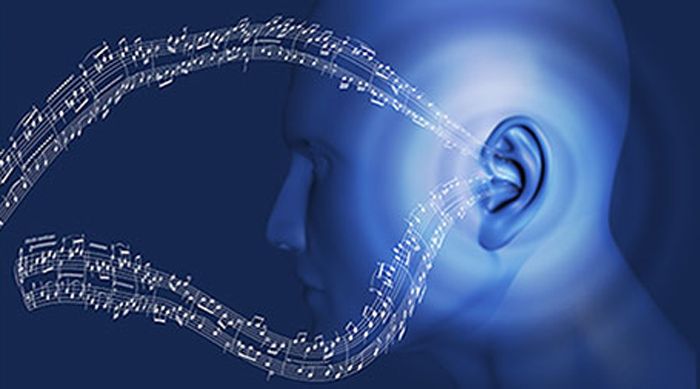New Algorithm Helps Cochlear Implants Detect Music

(ISNS) -- People who have cochlear implants placed in their heads had often never heard a sound in their lives before their implant. Once the device is placed, they can experience hearing, and often can even understand human speech.
Hearing music, however, has remained out of reach.
But now, researchers at the University of Washington in Seattle have developed an algorithm that vastly improves the sound quality of existing implants to the point where music sounds like something other than a random clamor.
People with the current versions of cochlear implants can hear rhythm, said Les Atlas, a professor of electrical engineering. Atlas himself has a partial loss of hearing. Subjects whose implants have been given a "major tweak" with the new algorithm can tell the difference between instruments.
"If they are hearing a single guitar, they can hear one note," said Atlas of current wearers. "If a person is playing fast, they can hear that. If a person is playing slow they can hear that."
However, the new algorithm does not allow their hearers to discern melody; that's the next project.
The work is published in the IEEE Transactions on Neural Systems and Rehabilitation Engineering. Atlas' coauthor is Jay Rubinstein, an engineer who went to medical school and became a surgeon.
Sign up for the Live Science daily newsletter now
Get the world’s most fascinating discoveries delivered straight to your inbox.
Cochlear implants relay sound from a microphone placed outside the ear to a device connected to the auditory nerves inside the ear. The sound a cochlear implant conveys is just a fraction of the sound a person with normal hearing can detect. But, for people with damaged sensory cells, they are the only hope of hearing much of anything.
The Washington study deliberately set out to modify existing devices so that people would not have to buy new implants to hear music.
The new algorithm was tested on eight cochlear-implant patients, and the researchers used anecdotal reports and computer simulations to recreate what the subjects heard.
Atlas said what implant patients hear now is the equivalent of someone playing a piano with their forearms. All the sound is "mushed together," and it is impossible to pick out a tune. Or, they can hear someone singing but cannot tell the difference between a man or a woman, a baritone or a soprano.
Music is characterized by attributes such as pitch and timbre. Pitch defines the melody notes of a song and the intonation of speech. Timbre is the difference in sound between instruments. For example, an A natural played on an oboe sounds different from a trumpet playing exactly the same note.
It is the pitch and timbre Atlas and Rubinstein were trying to improve. With the new algorithm, they could expand what most -- not all -- of the subjects heard from one octave to three. A low note could have a frequency of 80 cycles a second, or Hertz, something users of conventional implants can hear. With the new algorithm, some could hear up to 320 Hertz, closest in pitch to the E above middle C on a piano.
There is still a vast amount of aural information the new algorithm misses. Subjects can hear individual instruments, but a symphony orchestra is a cacophony.
The work is important because music is the hardest thing to hear, explained Charles Limb, a professor of otolaryngology, head and neck surgery at the Johns Hopkins Medical Institutions in Baltimore, a faculty member of the Peabody School of Music and science advisor to the Baltimore Symphony Orchestra. He said the Atlas-Rubinstein work is well-known in the cochlear-implant community.
Speech is relatively easy, Limb said, because the purpose of speech is to communicate a thought, which does not depend on high-quality sound. For example, the voice of Siri on Apple's iPhone communicates information effectively despite the artificial nature of the sound itself.
Music, however, depends on the quality of sound, he said.
Cochlear implants are getting better, he said, but getting better at speech. Little research has gone into music.
"Music is the hardest thing you can hear," he said. "If you can hear music, you can hear anything. If you design the perfect cochlear implant that could hear something like music very well then you can hear anything there is in the world."
Inside Science News Service is supported by the American Institute of Physics. Joel Shurkin is a freelance writer based in Baltimore. He is the author of nine books on science and the history of science, and has taught science journalism at Stanford University, UC Santa Cruz and the University of Alaska Fairbanks. He tweets at @shurkin.












